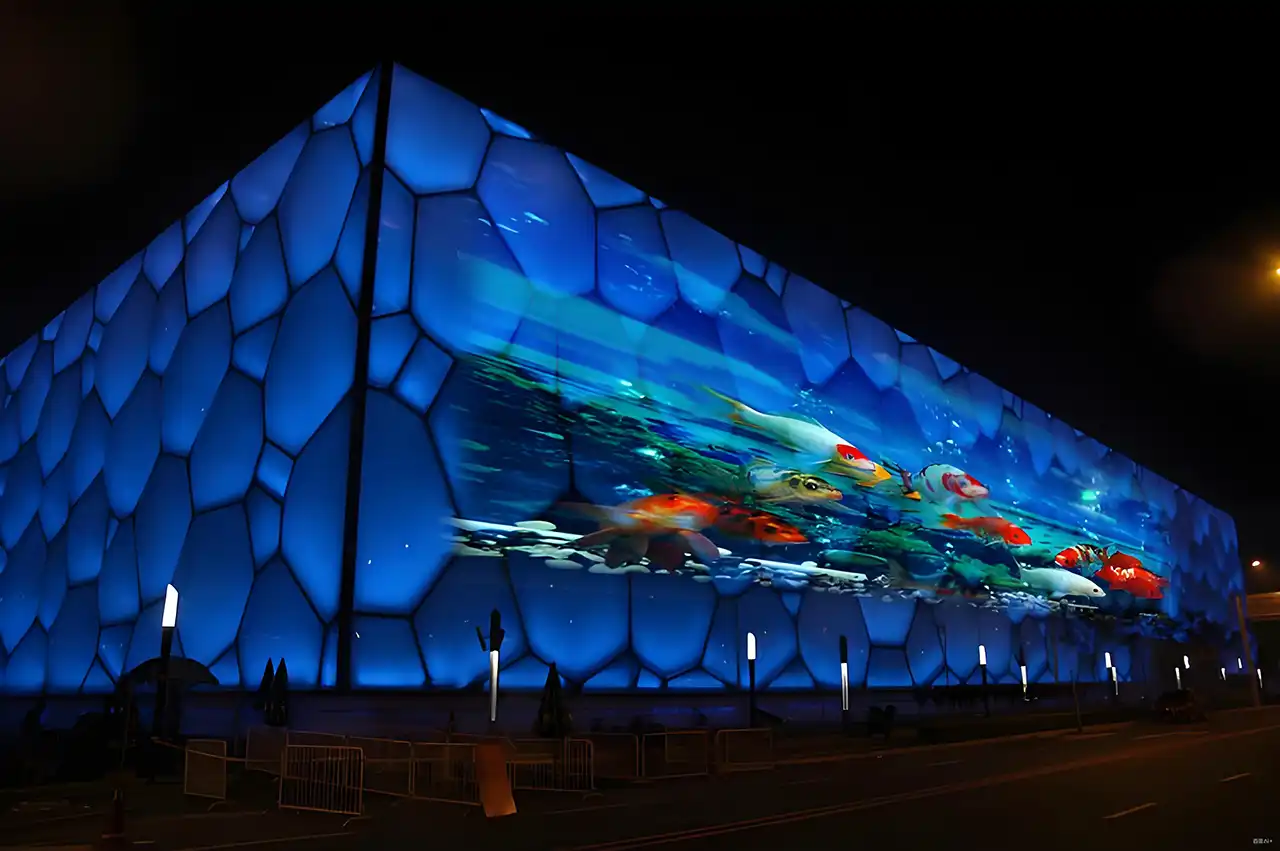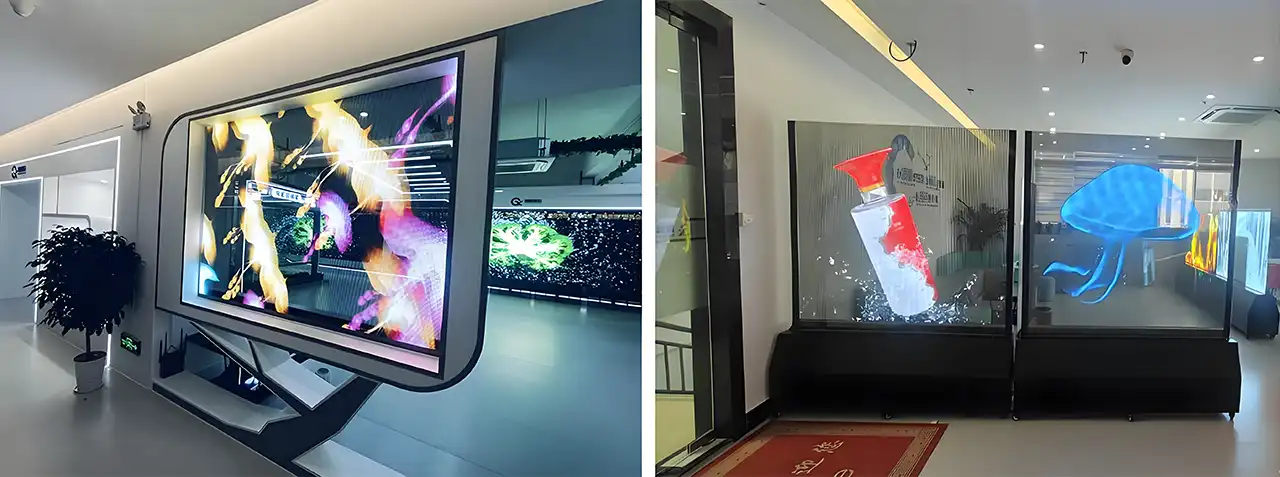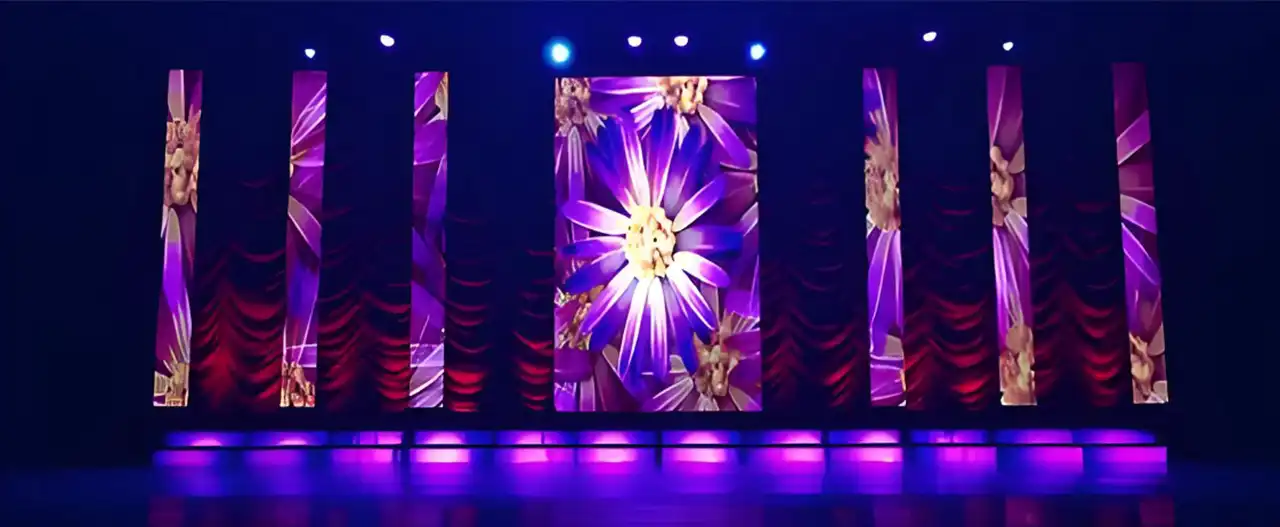Invisible LED screens are revolutionizing the world of display technology by offering a transparent and dynamic way to present high-quality visual content. Whether in retail, advertising, or other industries, these screens are becoming increasingly popular due to their ability to seamlessly integrate into the environment. However, when selecting the best invisible LED screen, price, brightness, and clarity are key factors to consider.
This article will help you understand how to choose the right invisible LED screen based on these key factors, and also how to achieve high-quality display performance within a reasonable budget.
An Invisible LED screen is a type of transparent display technology that maintains high transparency while displaying high-definition content. This unique technology makes it especially suitable for environments where transparent displays are required. It can seamlessly blend into the surroundings, without compromising the aesthetic of the space, while offering an impressive visual experience.
Reissopto is one of the leading brands in the industry, specializing in providing high-quality invisible LED screens. Known for its innovative design, exceptional transparency, brightness, and clarity, Reissopto’s invisible LED screens are widely used in commercial displays and advertising, offering excellent cost-effectiveness while meeting diverse needs and delivering high-quality visual effects.

When selecting an Invisible LED screen, there are three main factors to consider: price, brightness, and clarity. These factors directly affect the display quality and cost-effectiveness of the screen.
The price of invisible LED screens can vary depending on factors like size, resolution, and brightness. Generally, smaller indoor led screen are more affordable, while larger and higher-resolution screens tend to be more expensive.
For users with a limited budget, choosing a smaller Full HD screen is an ideal option, with prices typically starting around $1,200. For larger screens or those requiring higher brightness, prices can exceed $5,000.
To balance price and performance, it is important to choose a screen that offers the best value for money. Full HD screens are usually reasonably priced, but for users who require higher resolution and brightness, 4K or high-brightness displays might be necessary.
Brightness is another important factor when selecting an LED screen, especially when using it in outdoor or brightly lit environments. Brightness determines how visible the screen is under different lighting conditions. Generally, screens for indoor use require a lower brightness of about 1,000 to 1,500 nits, while outdoor screens require brightness levels of 2,500 to 5,000 nits to remain visible under direct sunlight.
For indoor use, you can opt for screens with lower brightness to keep the costs down. However, for outdoor displays, higher brightness is needed to ensure clear visibility in sunlight, though this will increase the price.
Clarity is a critical factor in determining display quality, especially when you need to show high-quality content. Screens with higher resolution can present more detailed, clearer images. Typically, Full HD (1920x1080) resolution is sufficient for everyday needs, but for applications requiring finer details, a 4K (3840x2160) resolution screen may be more appropriate.
Although 4K screens are usually more expensive, they deliver excellent image clarity and detail, making them ideal for advertising, exhibitions, and other applications that demand high-quality displays.
The transparent design of Invisible LED screens makes them suitable for various industries, especially in places that require high transparency, high-definition displays, and unique visual effects. Below are some specific application scenarios:
Retail Window Displays: Invisible LED screens are widely used in the retail industry, especially for store window displays. These screens can be embedded into store windows, displaying dynamic advertisements and product showcases while maintaining transparency and aesthetic appeal. This design not only attracts passersby but also enhances brand image and product exposure without affecting the storefront’s appearance.
Museums and Exhibition Displays: In museums and art exhibitions, invisible LED screens are used to display detailed information about exhibits, explanatory texts, or even interactive content. Thanks to their high transparency and excellent display quality, visitors can easily view the content on the screen without disturbing the exhibits’ integrity and visual appeal. Invisible LED screens can also serve as background displays, adding a modern and technological feel to the entire exhibition.
Large Events and Exhibitions: Invisible LED screens are commonly used in large events, exhibitions, and conferences, particularly in venues with limited space. These screens can display advertisements, brand information, real-time data, interactive content, or video playback. Their transparent nature allows them to seamlessly blend into the exhibition’s overall design, offering rich audiovisual effects without obstructing the view.
Smart Buildings and Glass Facades: With the evolution of architectural design, invisible LED screens are increasingly being used in glass facades and windows of modern buildings. These screens can serve as transparent advertising boards on building exteriors, displaying brand information, event promotions, or city-wide advertisements. Particularly in commercial buildings or shopping malls, invisible LED screens can deliver efficient advertising and information dissemination without affecting the building’s appearance.
Transportation Hub Information Displays: In airports, train stations, subways, and other transportation hubs, invisible LED screens are used to display flight information, train schedules, announcements, and advertisements. These screens provide clear, visible information while maintaining transparency, ensuring that they don’t obstruct passengers' views or create crowded spaces. They can also be integrated with intelligent systems to provide real-time content updates.
Restaurant and Hotel Industry: In restaurants and hotels, invisible LED screens enhance the customer experience. In restaurants, they can be used to display menus, daily specials, or interactive content with customers. In hotel lobbies, they can showcase upcoming events or hotel services. Their transparency allows them to blend seamlessly into the environment without disrupting the overall layout.

With continuous technological advancements, the performance and application of invisible LED screens are rapidly expanding. Some emerging trends include:
Higher Transparency: Future invisible LED screens will have higher transparency and thinner designs, enabling them to blend better into various environments while offering higher brightness and resolution.
Flexible Display Technology: As flexible display technology develops, future invisible LED screens may not be limited to flat displays but could be made into curved or bent forms to meet different design needs.
Interactive Features: With the maturation of touch and gesture control technology, invisible LED screens may integrate more interactive features, transforming them from static advertising tools into interactive display platforms.
Durability and maintenance are also important considerations when selecting invisible LED screens:
Durability and Environmental Adaptability: outdoorLED screens are designed to be waterproof, dustproof, and UV-resistant, making them adaptable to various environments, particularly for outdoor use or extreme weather conditions. Choosing the right screen type for different environments ensures long-term stable performance.
Maintenance and Lifespan: Invisible LED screens typically last longer than traditional LCD screensbut still require regular maintenance. Proper care can help prevent common damages and extend the lifespan of the screen.
To better understand the advantages of invisible LED screens, let’s compare them to other common display technologies:
Comparison with Traditional LCD: Invisible LED screens offer better transparency, brightness, and clarity compared to traditional LCD screens.
Comparison with OLED: While OLED screens are flexible and provide rich color, invisible LED screens offer higher transparency and better performance in bright environments.
Comparison with Projection Technology: Invisible LED screens provide stable, high-quality displays, unlike traditional projectors, which may be affected by light, obstruction, and projection area limitations.
Invisible LED screens also offer significant environmental advantages:
Energy Efficiency: Compared to traditional LCD screens, invisible LED screens are more energy-efficient, especially during long periods of use, significantly reducing energy consumption and helping businesses save on operational costs.
Recyclability: Some brands of invisible LED screens are made with recyclable materials, reducing their environmental impact. Highlighting these eco-friendly features can attract environmentally-conscious consumers and businesses.

Choosing the right supplier is crucial when purchasing invisible LED screens. Here's how to choose a reputable supplier:
Supplier’s Industry Experience: Opt for experienced suppliers who can provide complete technical support and after-sales services, ensuring smooth installation and maintenance of the screens.
Customer Reviews and Case Studies: Review customer feedback and success stories to understand the product’s performance and service quality. Reissopto, a leading industry player, is highly praised for its technological innovation and customer service in transparent display technology.
After-Sales Support: Ensure the supplier offers warranty policies, technical support, and ongoing customer service to ensure peace of mind after purchase.
Invisible LED screens offer long-term value:
Initial Investment vs. Long-Term Returns: While the initial investment may be high, low maintenance costs, long lifespan, and energy-saving effects will result in substantial long-term returns.
Reducing Advertising Costs: The high visibility and attraction of invisible LED screens make them highly effective in advertising, providing a better audience conversion rate while reducing costs from traditional advertising.
Prices generally start at around $1,200 for smaller indoor models, while larger, high-resolution screens can cost over $5,000.
The price of invisible LED screens is influenced by factors such as screen size, brightness, and resolution. Higher brightness and 4K resolution will increase the cost.
Full HD screens have a resolution of 1920x1080, while 4K invisible LED screens have a resolution of 3840x2160. 4K screens offer superior image clarity and detail, making them suitable for applications that require higher visual quality.
Choose based on your budget, brightness requirements, and resolution needs. For users with limited budgets, a Full HD screen may suffice. However, if you need higher visual quality, you might want to opt for a 4K resolution screen.
Invisible LED screens can be purchased through various professional display technology suppliers, such as Reissopto. Be sure to choose a supplier that offers comprehensive after-sales services and technical support to ensure a satisfactory purchase experience.
Hot Recommendations
Hot Products
Get a Free Quote Instantly!
Talk to Our Sales Team Now.
If you are interested in our products, please contact us promptly
Reach out to our sales team to explore customized solutions that perfectly meet your business needs and address any questions you may have.
Email Address:info@reissopto.comFactory Address:Building 6, Huike Flat Panel Display Industrial Park, No. 1, Gongye 2nd Road, Shiyan Shilong Community, Bao'an District, Shenzhen city , China
whatsapp:+8615217757270